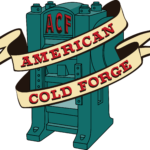In the world of manufacturing, precision and efficiency are paramount. Choosing the right forming technique can significantly impact the quality and performance of your components. Two popular methods, cold forming and hot forming, stand out for their unique advantages. In this blog post, we’ll delve into the differences between cold forming and hot forming, helping you make informed decisions for your projects. As a trusted cold forging supplier, American Cold Forge is here to guide you through the intricacies of these techniques.
Understanding Cold Forming
Cold forming, also known as cold working or cold forging, involves reshaping metal at room temperature. This technique is known for its ability to create intricate shapes and maintain tight tolerances. The process begins by subjecting the material to high pressure, causing plastic deformation. Cold forming is ideal for producing components with improved dimensional accuracy, surface finish, and mechanical properties. It’s a preferred choice when maintaining the material’s strength is essential.
Exploring Hot Forming
Hot forming, on the other hand, is a process that involves shaping metal at elevated temperatures. This method takes advantage of the material’s increased ductility at high temperatures, allowing for complex shapes to be formed with ease. The heat reduces the force required for deformation and minimizes the risk of cracking. Hot forming is particularly useful for materials that are difficult to shape at room temperature, such as certain alloys and steel grades.
Comparing Advantages:
- Material Compatibility:
- Cold Forming: Suitable for a wide range of materials, especially non-ferrous metals.
- Hot Forming: Ideal for materials that exhibit enhanced ductility at elevated temperatures, like steel.
- Mechanical Properties:
- Cold Forming: Preserves material strength and hardness, making it suitable for applications requiring high mechanical performance.
- Hot Forming: Can result in improved material properties due to recrystallization, but may lead to reduced strength in some cases.
- Surface Finish:
- Cold Forming: Offers excellent surface finish and dimensional precision.
- Hot Forming: Surface finish may be affected due to oxidation and scale formation.
- Complexity of Shapes:
- Cold Forming: Well-suited for intricate and precise shapes.
- Hot Forming: Allows for the shaping of complex and large parts with minimal force.
Choosing the Right Technique
The choice between cold forming and hot forming depends on various factors, including the material, component design, required tolerances, and mechanical properties. Collaborating with experts like American Cold Forge can help you determine the optimal technique for your project. Our experience as cold forging suppliers equips us to offer tailored solutions that meet your specific requirements.
Both cold forming and hot forming have their merits, and the decision should align with your project’s goals and material characteristics. American Cold Forge stands ready to assist you in making the right choice. With our expertise in cold forming and commitment to delivering precision, we’re here to ensure your components are manufactured to the highest standards of quality and performance. Contact us today to explore the possibilities and elevate your manufacturing endeavors.
